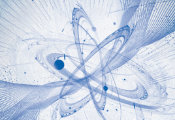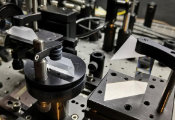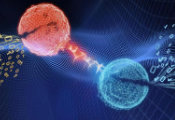Halfway Through: The QSolid Quantum Computer Project Is Heading Towards the Prototype of the 10-Qubit Demonstrator
Jülich, July 22, 2024 –- Since January 2022, QSolid has been working on a high-quality quantum computer “Made in Germany” based on superconducting quantum chips. After 30 months, the large-scale project, led by Prof. Frank Wilhelm-Mauch from Forschungszentrum Jülich, has reached the mid-term. In the first half of the project, the team of over 160 people from 25 partner institutions was able to develop key technologies for an initial 10-qubit prototype of the final demonstrator. This created the basis for the implementation, further development and scaling of the system in the remaining course of the project until December 2026.
The focus of QSolid is on quantum bits, or qubits for short, of very high quality with a low error rate. The susceptibility of qubits to errors is currently considered one of the greatest challenges in quantum computer development. The project envisages a system that contains various quantum processors based on next-generation superconducting circuits with a reduced error rate.
At the mid-term of the project, almost all partners have reached their individual milestones, which means that larger subsystems for the cabling, electronics and software have already been developed and installed on the central system. As an overall milestone, a first prototype of the QSolid half-time demonstrator with 10 qubits, low error rates, an integrated software stack and cloud user access will soon go into operation. Users will then be able to draw on the computing power via the JUNIQ quantum computer infrastructure at Forschungszentrum Jülich. At the heart of the prototype are quantum processors, which already demonstrate very impressive performance and are currently being integrated by the system engineers. Meanwhile, the team is calibrating the two parallel systems, giving them the finishing touches at the mid-term stage of QSolid.
The 10-qubit prototype is only a first intermediate step towards higher scaling. By the end of the project in December 2026, the system is to be further developed so that it can control 30 qubits at best with the highest possible error correction. For this second project phase, the team has already completed initial preparatory work.
“Over the past two and a half years, we have established excellent capacities and an ecosystem. Despite some challenges, the team was able to achieve almost all of the interim goals set and launched a system with promising performance values. While we are still integrating and fine-tuning the last subsystems, work is already underway to improve the performance of the prototype, which is designed to perform complex computing operations for industrial and scientific applications”, says project coordinator Prof. Frank Wilhelm-Mauch.




































